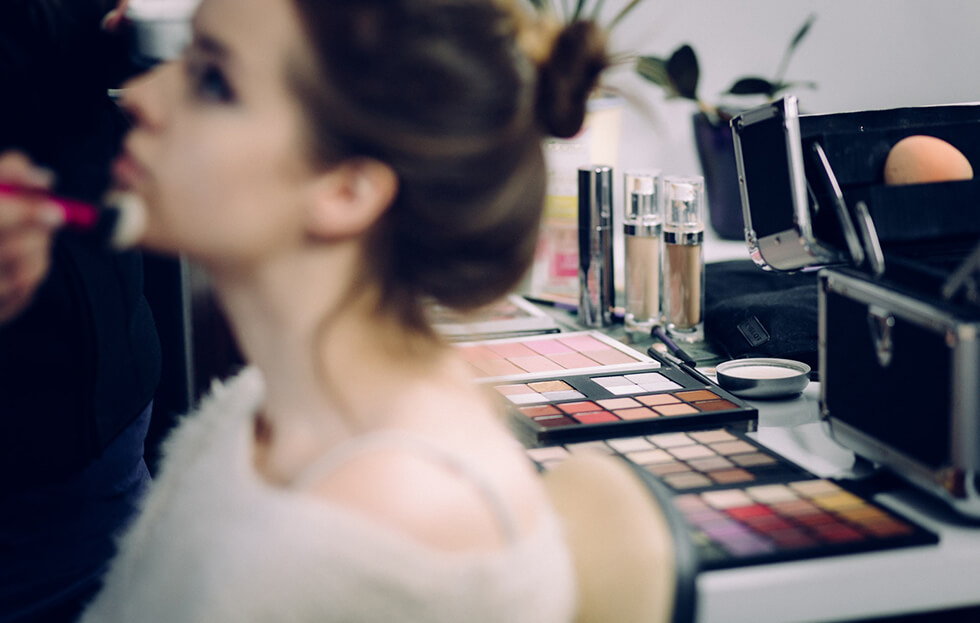What is toxic beauty? We all worry about what we are putting in our bodies, as we should. Nonetheless, we need to start paying closer attention to what we put on our bodies. While the skin acts as a barrier it also absorbs. We concentrate on counting calories, eliminating carbohydrates, and adhering to the latest diets to make ourselves healthy. However, we forget about what we are putting on our bodies. Our skin is the largest organ in the body and daily we constantly feed it toxins. It is time to stop.
Banned Chemicals
A survey done by the Environmental Working Group found that the average person uses nine products daily, which can contain 126 unique ingredients. Moreover, what should scare you more is that in the United States, safety tests are not required for the cosmetic industry. The FDA ban eight chemicals and restricts three that are common in the cosmetic industry. By comparison, the European Union ban 1300 common chemicals.
You may have heard that our body absorbs a certain amount of toxins in a certain amount of time? It is true and it is false. There are so many variables:
The Skin
Our skin is divided into three distinct layers:
-
- The Epidermis: This is the outermost layer of our skin, what we see and feel every day. The epidermis protects us from the world. More importantly, its thickness is dependent on where on the body we are talking about. (As we will see later skin thickness has a direct correlation to the absorption rate of toxins).
- The Dermis: This is the layer between the epidermis and the subcutaneous tissue. It cushions the body from stress and strain.
- Subcutaneous tissue or Hypodermis: This is the innermost layer of the skin. It is made up of fat and connective tissues. It contains the larger blood vessels and nerves. The hypodermis helps regulate body temperature.
Absorption rate into the skin depends on several factors:
-
- The structure and size of the chemical applied to the skin. So are you lathering your skin with lotion daily, not knowing what is in the lotion? Do you apply sunblock generously before reading the label?
- Skin integrity. Is your skin damaged? Damaged skin will absorb toxins quicker.
- Skin temperature.
- The concentration of the chemical on the surface of your skin. Some lotions, oils are more concentrated in toxins than others.
- Length of time your skin is exposed to the toxins. Are you using the same deadly lotion three times a day?
- The area of your body exposed. Remember that some areas of your skin are more susceptible because the skin is thinner. For instance, the absorption rate on your forehead and scalp is four times greater than the absorption rate on your forearms.
Then the question is how does the skin absorb toxins?
-
- Dermal absorption sound complicated but it isn’t. It just three separate ways toxins can get into your skin:
- Intracellular where chemicals penetrate the skin by passing directly through cells
- Intercellular have toxins weaving their way between cells
- And when they sneak their way in through hair or sweat ducts it is called transappendageal (pretty impressive name huh?)
Into the Body
Once a chemical passes through the upper layers of the skin it is absorbed by the bloodstream or lymphatic system. This is really bad. Unfortunately, the skin is not the only way we are getting toxins in our body.
They can enter through our breathing, like perfume. We can also ingest them. Did you know that some lipsticks and lip products contain heavy metals?
While the European Union has banned 1200 ingredients more than the Federal Drug Administration in the United States, we personally need to be diligent. Here are some ingredients to look for that are bad:
-
- Phthalates sometimes go by the names of ‘parfum’ or ‘fragrance’
- Any words that look like methyl, ethyl, propyl, iso, benzyl to name just a few ingredients.
- TEA & DEA whose true names are triethanolamine and diethandamine which are banned from products in Europe as they are commonly known as carcinogens (any substance, radionuclide, or radiation that promotes the formation of cancer). Oddly enough they are not banned in the United States.
- Triclosan and Triclocarbon are actually banned by the FDA in soaps. They kill bacteria. However, though they are banned in soaps they are legal in deodorants and cosmetics.
Safer Products vs. Toxic Beauty
All is not lost. We don’t have to trade softer skin, enticing lips, and smelling good because all products are not toxic. There are resources you can go to find natural products and resources:
GoodGuide is a website that ranks products on Ingredient Hazard Concerns, Negative Aspects, Certifications, Data Adequacy. The site is easy to use. Type in the product you have concerns about. The site will rank the item, provide hazard concerns, and listed alternative products.
Beautycounter sells safe make-up, skincare, and bath & body products. Their mission is to get safer products into the hands of everyone.
bareMinerals provides clean beauty products, that are good for your skin and the environment.
Burt’s Bees sells beauty and skincare products with “Ingredients from Nature”.
Beauty Doesn’t have to be Deadly
You know all that energy you put into reading the labels for the food you eat, and the effort used to stay fit. However, daily we feed our skin toxins, not knowing what is in our personal care and beauty products. Put some of that energy into what you put on your body. Safe products are out there! Moreover, we don’t need toxic beauty.





